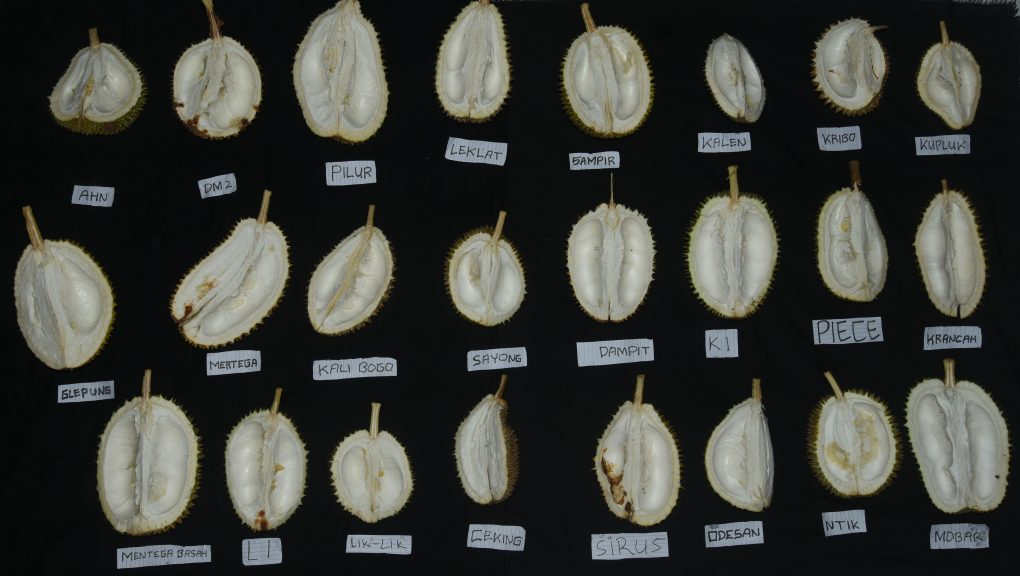By Sidiq Harjanto & Kurnia Ahmadin
We believe that a sustainable economy is key to safeguarding the forest habitat of the Javan gibbon. This is why SwaraOwa have made shade coffee (coffee that grows under the natural shade of forest trees), palm sugar and beekeeping ‘core businesses’ of ours. In this, our primary aim is to promote sustainable economic growth for the communities living around the forests inhabited by the Javan gibbon. If we manage to develop these businesses in line with forest conservation efforts, we will demonstrate that it is possible to improve the welfare of local communities without over-exploiting our forests.
In Mendolo Village, we are close partners with the Mendolo Young Farmers Association (PPM Mendolo), who are the driving force for nature conservation in their village. As the younger generation there mostly still practice farming, PPM Mendolo functions as an incubator for them to launch innovative projects at a local level.
Tasting the richness of Mendolo’s durians
Durian has long been a sought-after commodity in Mendolo Village. With its superior taste, Mendolo’s durians also form one of the main pillars of the local economy. However, because this village is quite hard to reach, its durians are not well known among lovers of this tropical fruit.
And so the PPM youth had the idea of transforming their village into an attraction where visitors can enjoy local durian directly at its source. Developing tourism will also boost Mendolo’s reputation as the home of quality durian.
On 15 January 2023, PPM Mendolo invited Biolaska (Students of Biology at UIN Sunan Kalijaga Yogyakarta, IDS (Indonesia Dragonfly Society), and SwaraOwa to research the potential of durians from Mendolo Village. We inventoried and did taste profiling on durians grown by local farmers. Our aim is to produce a catalogue of durian varieties in Mendolo that will most certainly be of use to durian enthusiasts seeking to explore the richness of these durians that are Mendolo’s very own.
From a sample of 24 local durian varieties, we identified different physical and taste characteristics. Fruit shape ranges from perfectly round, to ovoid, to wavy, all the way to pear-shaped. Husk colours include green, yellow and brown. The fruit itself also varies in colour, from white to yellowish white yellow. In terms of fruit taste, the profiles include sweet, creamy, alcoholic, slightly bitter, and sticky rice. The thickness of the fruit flesh is another variable characteristic.
During our time there, everybody was given a chance to experience ngramban, an activity where food plants growing wild in the forest are collected and then cooked for dinner. That night, we served up no less than 18 dishes. This is a valuable tradition, as preparing food from locally sourced natural ingredients instils in the village community an appreciation for the various wild plants and animals in their surroundings.
The wildlife found in the forests nearby also offers the potential for ecotourism. Wildlife watching has in fact vastly gained in popularity in recent years. In this connection, PPM Mendolo have actively collected data on the avifauna in and around the village, and monitored primates such as the Javan gibbon, Javan langur and Javan slow loris.
Sustainable growth for Mendolo
Our projects in Mendolo were not solely conceptualised as an alternative livelihood for the community, but also as a catalyst for village development. Law No. 6/2014 on Villages has brought about a paradigm shift, with the focus moving away from growing villages to villages growing. This puts villagers in the driver’s seat where village development is concerned. They are irreplaceable with their intimate knowledge of local conditions and history, and are our greatest hope in realising a development trajectory in line with sustainable principles.
Each village is unique in its potential for development. Getting villagers, especially the younger generation, acquainted with their biodiversity and various types of produce, will help spread awareness of how humans can enjoy tangible benefits from working in harmony with nature.
As a simple example, durian plantations do not automatically yield abundant fruit. In order to produce a good crop, farmers need wild birds to provide pest control services, as well as bats to do pollination. If they are made aware of this, the community will naturally want to protect the ecosystem to consistently reap a good durian harvest.
Biodiversity is Indonesia’s greatest asset and certainly also its future, but we need to preserve and manage it properly. For this to work, we must take care of diversity at the species, genetic and ecosystem level. The diversity of durian varieties in Mendolo is an example of diversity management at the genetic level. This diversity can be transformed into capital to develop Indonesia if more people come to appreciate the value of having such a broad range of durian flavours.
